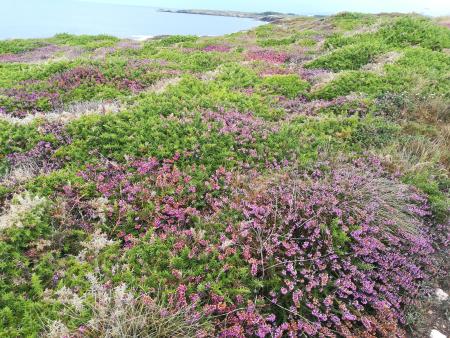
Objective:
A large number of the medicinal and aromatic plants (MAPs) on the market come from wild collection and some of them are being overexploited or exploited without following proper practices. Establishing an adequate management could maintain the use of some species without compromising their conservation and obtain a benefit for the rural community.
In order to collect, it is necessary to evaluate the situation of that species in the place where it is going to be collected to estimate if it can be considered a “resource” or not, and to do it following an adequate methodology.
Context:
When considering whether a wild species can be harvested in a given context, a global assessment of this species should be made, including: the suitability of the origin of the plant material (collection or cultivation) and what implications (environmental, economic, technical and social) both options entail, the current situation of this species and the vulnerability of being collected. The answers obtained will help to define a more or less restrictive and conservationist management objective or another one oriented to a sustainable use that includes regeneration and conservation.
Contacts:
Roser Cristóbal Cabau, roser.cristobal@ctfc.es, http://www.ctfc.cat/, http://apsb.ctfc.cat/
Further information:
http://www.valuepam.eu/files/socios/andanatura/E%20121%20Metodologia%20valuepam_ES.pdf
Elzinga C.L., Salzer D.W., & Willoughby J.W.; 1998. Measuring and monitoring plant populations. BLM/RS/ST-98/005+1730. US Department of the Interior, Bureau of Land Management, National Applied Resource Science Center. Denver, Colorado, USA.
FairWild Resource Assessment: FairWild Guidance Manual for Establishing Species and Area Management Plans for Low Risk Plant Species. (Versión 1.0 - December 2014). FairWild Foundation, Weinfelden, Switzerland. 41pp.
Leaman D.J.; 2008. The international standard for sustainable wild collection of medicinal and aromatic plants (ISSC-MAP). Elements of the Standard Relevant to CITES NDF. International Expert Workshop on CITES Non-Detriment Findings Perennial Plant Working Group (Ornamentals, Medicinal and Aromatic Plants. Cancun, Mexico, November 2008.
Leaman D.J.; Cunningham T.; 2008. Guidance for implementing the International Standard for Sustainable Wild Collection of Medicinal and Aromatic Plants (ISSC-MAP). Resource Assessment, a guide to implementing Principle 1: maintaining Wild MAP Resources. IUCN-SSC Medicinal Plant Specialist Group.
Michler B.; 2007. Conservation of Eastern European Medicinal Plants. Arnica montana in Romania. Case study Gârda de Sus. Management Plan. Ifanos Landschaftsökologie. WWF-UK, Darwin Initiative.
Peters C.M., Purata S.E.; 2014. Taller de Capacitación: métodos para la valoración de productos forestales no maderables con fines de manejo sostenible. 20-22 de mayo de 2014, Santa María Huatulco, Oaxaca, México.
Schindler, H., Ponsens, J. & Schneider, A.; 2010. Manual for sustainable wild collection practice. Institute for Marketecology, BIO Foundation Switzerland. Deutsche Gesellschaft für Technische Zusammenarbeit (GTZ) GmbH. Eschborn, Germany.
Schumann K., Witting R., Thiombiano A., Becker U., Hahn K.; 2010. Impact of land-use type and bark- and leaf-harvesting on population structure and fruit production of the baobab tree (Adansonia digitata L.) in a semi-arid savanna, West Africa. Forest Ecology and Management 260(11), 2035-2044 pp.
Schumann K., Witting R., Thiombiano A., Becker U., Hahn K.; 2011. Impact of land-use type and harvesting on population structure of a non-timber forest product- providing tree in a semi-arid savanna, West Africa. Biological Conservation 144(9), 2369-2376 pp.
Vázquez Pardo, F.M., Blanco Salas, J.; 2007. Conservación de flora amenazada en ambientes mediterráneos. Centro de Investigación La Orden-Valdesequera. Grupo de Investigación HABITAT. Dirección General de Innovación y Competitividad Empresarial. Junta de Extremadura.
Weigend M. & Dostert, N.; 2008. Manejo sustentable de ratania en Perú. Bootconsult GmbH, Weleda AG. Documento D23/02-34.